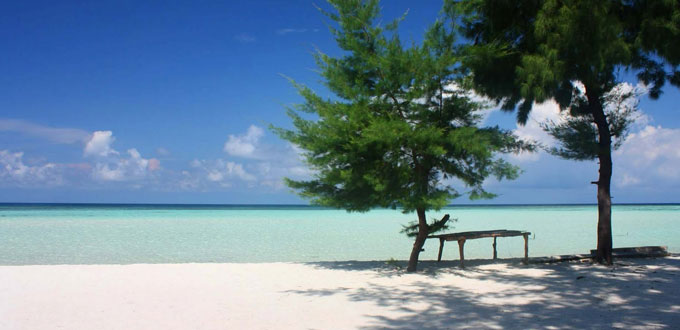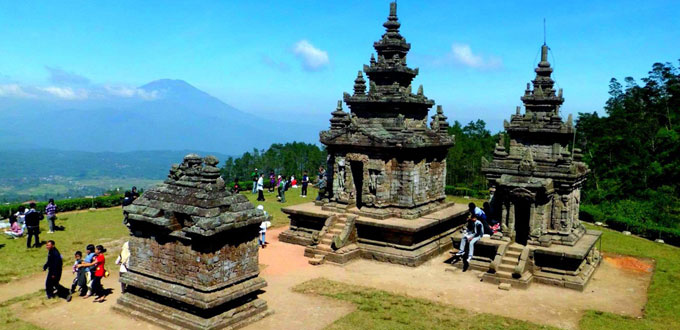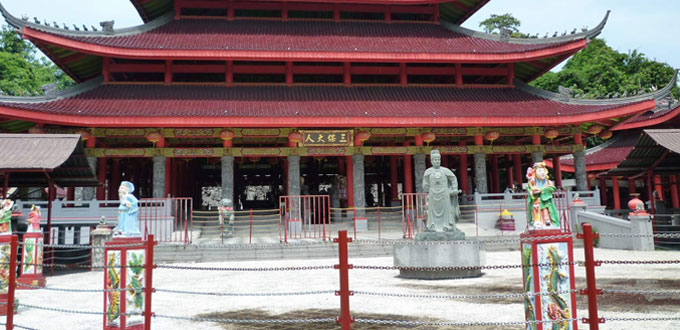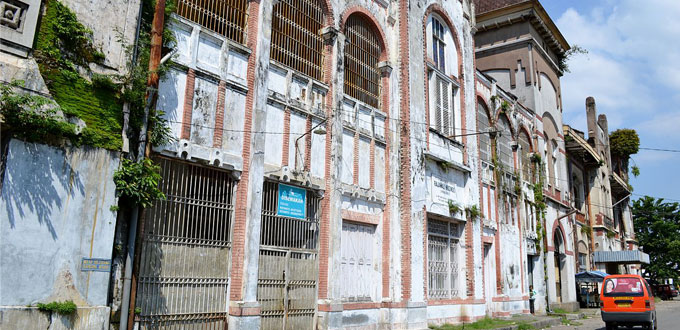Central Java Explore Area Tour Package: Yogyakarta – Karimun Jawa Island 11 days/10 Nights

 Day 1. Join tour Yogyakarta
Day 1. Join tour Yogyakarta
Situated almost exactly halfway along the length of Java, in an area considered to be the heartland of Javanese, Yogyakarta is home to some of the island’s oldest traditions and blessed with a rich, fertile soil from the volcanic ash. It is the cultural capital of Java, with a real mixture of cultural influences, including Hindu and Buddhist temples, dating from the 8th century, Islamic Palaces from the 18th century and Dutch colonial architecture that harks back to the days when the Netherlands held much of Java in its imperialistic grip.
Day 2. Prambanan Temple and Yogyakarta City Tour – Evening visit to Ramayana Ballet
This morning we drive northeast out of the city, heading for the Hindu temple complex of the Prambanan Plain. This remarkable area, one of the most fertile on the island, is home to an incredible array of temples and palaces from the 8th and 9th centuries. The centrepieces of the complex are the three temples that occupy the central courtyard, towering spires dedicated to the Hindu gods of Vishnu, Brahma and Shiva (which at 47 metres is the tallest of the three). We will visit the complex with a local guide, wandering amongst the temples and enjoying some of the finest samples of Hindu sculptural detail left on the island. It is believed that the site was abandoned some 300 years ago, when earthquakes reduced many of the spectacular edifices to rubble. Abandoned to the elements the lay undisturbed until the early years of the 20th century, when reconstruction of the extensive ruins was begun. On our return we take a tour of the city, believed to be one of the most engaging and best preserved on the island. We will include the Kraton Palace complex, which traditional beliefs hold to be the capital of the kingdom and the hub of the cosmos. Built by Java’s first ruling Sultan, Prince Mangkubumi, the palace lies at the heart of a walled city that houses tens of thousands of people, whilst parts of the outer walls are still occupied by Javanese royalty. This quite remarkable complex houses not only the palace buildings, but also everything you would expect of a small town, including markets, mosques, schools and an assorted array of artisans and traders. We will visit the palace, home of the Sultans since the 18th century, as well as the Sonobudoyo Museum, containing an exquisite collection of Javanese art, including masks, batiks and puppets. We wll also visit the Alun Alun Lor Square, a public area that once served as a courthouse and an arena. Within the centre of the square are two sacread banyan trees, under which opposing protagonists would stand and state their case to the Sultan. Its other, rather more basic function was that of a venue for staged fights between tigers and buffalos (or in some cases tigers and condemned criminals), many of which saw the tiger (and almost certainly the criminal) come out as the loser.
After our visit the rest of the day is free to explore more of the city at your own leisure. You may like to wander through the handicraft shops; Yogya is renowned for its batik, as well as its excellent silver and leatherware. There are a number of museums that are well worth seeing in the city and it is also a centre for the performing arts – the traditional Wayang (shado-puppets shows whose origins date back to over 1000 years ago) are particularly recommended. This evening there is the opportunity to view a performance of ‘Ramayana Ballet’, an adaptation of the Hindu epic (optional).
Day 3. Drive to Wonosobo and Borobudur
This morning we head west to Borobudur, the largest and most impresive Buddhist monument in the southern hemisphere.
Constructed in the 8th century this incredible monument – a petrified a vision of the Buddhist cosmos – was lost for 900 years, when Mt Merapi erupted and covered Borobudur in layer of volcanic ash. The structure itself is immense, a gigantic Buddhist stupa constructed from 2 million blocks that covers an area of 200sq metres and rises some 34.5 metres above the Kedu Plain.
Older by nearly half a century than the site at Prambanan, Borobudur is believed to have been built on the top of foundations for what was originally a temple dedicated to Shiva, abandonded by the Hindu Sanjayas when their Buddhist rivals the Sailendras swept through the Malay peninsula during the 8th century.
A combination of earthquakes, subsidence and the mass migration of the Javanese to the east of the island saw the temple abandoned sometime during the 9th century, to be rediscovered again later by the British. Substantial work has been carried out to salvage the exquisite carvings and designs that adorn the structure and we can wander through the site today and marvel at the incredible detail of its narrative panels, which detail everything from Buddhist doctrines to the daily life of the Javanese. Finally we drive to the small town of Wonosobo, nestling amongst the hills of the central mountains.
Day 4. Visit and Tour at Dieng Plateau
Leaving early in this morning we drive up to the Dieng Plateau (1980m), where we visit Java’s oldest temples, set amongst a spectacular vista of mountain lakes, geysers and thermal springs. Lying within a volcanic caldera, Dieng translates as ‘Abode of the Gods’ and at this altitude low cloud and mists very often hug and folded landscape, instilling the area with an air of mystical serenity. Spread across this surreal landscape lie the remnants of hundreds of abandoned temples that date from the 7th century, when Hindu priests and pilgrims regularly occupied this sacred sight.
Like the other temples we have seen in the area, Dieng too was abandoned during the mysterious exodus that took place some 1000 years ago.
We will visit some of the prime sites around the plateau, including the Arjuna complex, which are believed to be the oldest of the temples. Dedicated to Shiva, one of Hindu’s great deities, the five temples that make up this central complex are all named after characters from the Mahabharata tales.
We will also visit nearby museum at Candi Gatutkaca, where we will find a collection of statuary and sculptures retrieved from some of the other temples around the site. At Candi Bima we discover the fascinating carvings of sculpted faces (kudu), blanklu starring back from the walls of the temple and more often seen in the temples of southern India, but strangely unique to Java.
As well as the temples the Dieng Plateau is as much renowned for its incredible natural features and our visit also includes the sulphur lakes of Telaga Warna and Telaga Pengilon (colored and mirror lake respectively), as well as the smoking fumaroles of Kawah Sikidang. At the end of the tour the rest of your time here is free to explore as you wish, before a late afternoon departure back to Wonosobo.
Day 5. Drive to Tawangmangu via Mangkunegaran’s Palace at Solo; village walk to Candi Sukuh
Departing the highlands this morning we turn east, travelling via Ambarawa and Salatiga and across the Prambanan Plain once more, to the city of Surakarta, more commonly known as Solo. This is Java’s second royal city, situated on the banks of the Kali Solo River and nestling in the shadow of three of Java’s highest volcanoes. Like its younger rival Yogya, the city is a hub of Javanese culture and tradition, but has probably seen more than its fair share of upheaval and bloodshed following its foundation in the mid 18th century. We intend to visit the palace of Puri Mangkunegaran, which has the largest pavilion in Indonesia, a cavernous structure with a vividly decorated ceiling depicting figures of the Javanese zodiac. The palace also houses an excellent museum containing some quite unique artifacts, including gold-plated dresses, unfeasibly large Buddhist rings and his and hers golden genital covers!
After our visit we continue east, towards the hill town of Tawangmangu, lying on the slopes of Gunung Lawu close to the border with eastern Java. The western slopes of Gunung Lawu, one of Java’s holiest mountains, is blanketed in lush forests and dotted with numerous temples. These religious sites are the last built by the Hindus before the island converted to Islam. One of the most spectacular by far is that of Candi Sukuh, a mysterious structure that sits some 900m above the surrounding countryside.
Built during the 15th century this unusual pyramid seems to bear little resemblance to the earlier structures that we have seen and indeed there is still some mystery as to who built it and why. Its remarkable carvings would seem to indicate that the temple was dedicated to a fertility cult and it is believed that part of the temple’s purpose was to determine the faithfulness of existing wives and the virginity of potential ones. Our return walk to the temple from the village will take us around three and a half hours including our visit.
For those interested there is the possibility of taking a walk this evening to the nearby waterfall of Grojogan Sewu, a favourite haunt for local monkeys and a great place to reflect on the day.
Day 6. Tawangmangu – Transfer to Semarang
After breakfast we will leave Tawangmangu to Semarang. Here we will explore Gedong Songo Temples.
Gedong Songo or “nine building” Temple complex are temples sites on mountain slopes where you can reach them by trekking or riding a horse passed by the side of valley and river. A friendly horse mentor will accompany you during your ride. You will see natural view from pine forest to the hot water spring.
Upon completion of the tour we will continue to Grand Candi Semarang Hotel.
Day 7. Semarang – Karimunjawa Island
In the morning, proceed to Tanjung Emas Sea Port Semarang. Kartini 1 tilt ferry will bring you to Karimunjawa, cluster of 27 pristine tropical islands located about 45 nautical miles northwest Jepara.
Upon arrival at Karimunjawa, after hotel checking in, you may continue your full day activities at sea such as diving, snorkeling, fishing, sun bathing, or watching the beauty of the various coral reefs and fishes from glass bottom boats. Bird watching is also possible when time permits.
Enjoy the night barbecue at the island or going to floating restaurant for your dinner. A local fisherman boat will take you there and return. End the day and experience the silent night at the island.
Day 08. Free activities at Karimunjawa Island
Free time at your own leisure.
Day 09. Karimunjawa – Semarang City Tour
Today we return back to Semarang. Once we reach Semarang continue City Tour visiting:
Semarang Old City , In this area, you can find an interesting complex of old buildings with European architecture built in Dutch colonial era. Here you find as well the round-shapeddomeProtestant Church Immanuel, so called Gereja Blenduk, which was built in 1753 and Marabunta, an ex Opera House where a big spy at First World War named Matahari had visited the building during her stay in Java. The interior design of Marabunta shows the rest of its glory at that time.
Leaving Semarang old city, you may continue to explore one of noble Javanese cultural inheritances, herbal drink (jamu) in Nyonya Meneer Herbal Drink Museum. The museum displays pictures of the herbal drink making process both traditionally and machine-made, herbal drink products, and also anything related to it.
After lunch we continue our tour to Mandala Bakti Museum which stores a wide range of weapons from traditional pointed bamboos to imported guns which were used in the Indonesian battle against Dutch. And also visiting Ronggowarsito Museum , Puri Maerokoco , Sam Poo Kong Chinese Temple and Jalan Pandanaran (food/snacks specialty stalls) where you can find food/snacks specialties of Semarang such as Wingko Babat (light snack made of sticky rice, coconut, and sugar), Bandeng Presto (ready to eat pressure-cooked milk fish), Loenpia (spring roll containing young bamboo, shrimp, and scrambled egg), and many more.
Upon completion we overnight at Hotel, Semarang.
Day 10. Semarang – Yogyakarta
Today we will return back to Yogyakarta. Spend one night in a comfortable hotel and re-packing for your return flight tomorrow.
Day 11. Yogyakarta – Transfer out
After breakfast, we will transfer you to airport for your return flight. End of services.
For more info: centraljava@indonesia-tourism.com





